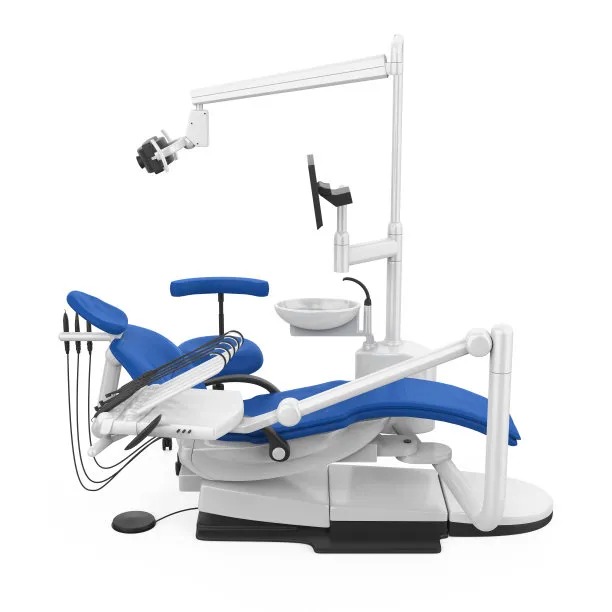Essential Dental Filling Precautions to Ensure Effective Treatment and Long-lasting Results for Your Oral Health
Summary: Dental fillings are a common solution for restoring teeth damaged by cavities or trauma. However, ensuring effective treatment and achieving long-lasting results requires careful attention to various essential precautions. In this article, we will explore important considerations in four main areas: pre-treatment preparations, the filling process, post-treatment care, and regular follow-up. Each section is designed to help you understand the critical steps necessary to ensure that your dental filling serves its purpose optimally and contributes positively to your overall oral health.
1. Pre-Treatment Preparations for Success

Before undergoing a dental filling procedure, thorough preparations must be made. This includes scheduling a comprehensive dental examination to evaluate the extent of decay or damage. A qualified dentist will typically conduct X-rays to help identify hidden cavities and structural issues that need to be addressed prior to the filling.
Additionally, effective communication with your dentist is crucial. Be sure to discuss any allergies, sensitivities, or previous dental experiences that may impact your treatment. This proactive engagement allows the dental professional to tailor their approach, ensuring your comfort and safety throughout the procedure.
Finally, consider your oral hygiene routine leading up to the appointment. Maintaining good oral hygiene, such as brushing and flossing diligently, can significantly contribute to reduced inflammation and a clearer treatment area. When gums are healthy, it minimizes complications during and after the filling procedure.
2. Ensuring a Smooth Filling Process
The actual filling process is vital to achieving long-lasting results. Dentists utilize local anesthesia to numb the area around the affected tooth. It is essential that patients communicate openly about their comfort levels throughout the procedure, allowing the dentist to adjust as needed.
The choice of filling material鈥攕uch as amalgam, composite resin, or glass ionomer鈥攕hould also be discussed thoroughly. Each material has distinct advantages and disadvantages, depending on factors such as aesthetics, durability, and the specific tooth location. By engaging in this discussion, a personalized decision can be made that best suits your needs.
Moreover, during the filling process, dentists must ensure that the area is free from saliva and debris. The use of a rubber dam can help in maintaining a dry field, which is critical for achieving a strong bond between the filling material and the tooth structure. This attention to detail is key to the longevity of the filling.
3. Implementing Post-Treatment Care
After the filling procedure, following specific post-treatment care instructions is crucial for ensuring the filling remains effective for years. Initially, patients should avoid hard or sticky foods for at least 24 hours to allow the filling to set properly. This means steering clear of items such as gum, ice, and hard candies that could dislodge or crack the filling.
Maintaining careful oral hygiene following treatment is equally important. Regular brushing, flossing, and using mouthwash promote healing and help prevent new cavities. Additionally, paying attention to any discomfort or sensitivity that persists after the procedure is vital; if symptoms continue, following up with your dentist is crucial to avoid further complications.
Lastly, it is advisable to keep an eye on the filling itself. Regularly check for signs such as cracks, discoloration, or change in texture. If any abnormalities are noted, prompt communication with your dentist ensures timely intervention, which can extend the lifespan of the filling significantly.
4. Scheduling Regular Follow-Ups
Regular dental check-ups play a major role in maintaining oral health, especially after having fillings done. Most dentists recommend visits at least every six months. These examinations provide an opportunity for your dental professional to monitor your fillings and check for any developing issues that may require attention.
Moreover, routine dental cleanings remove plaque and tartar that brushing alone might miss. These cleanings can help reduce the potential for future cavities and ensure that both your filling and the surrounding teeth remain in good health. Neglecting scheduled visits could lead to a situation where new issues arise, putting your oral health at risk.
In addition, patients can also take the initiative by keeping a record of their oral health status. This includes noting any changes they observe in fillings or surrounding tissues, which can be incredibly helpful during check-ups. Such diligence fosters a collaborative approach between patient and dentist, ensuring optimal care.
Summary:
In summary, ensuring effective dental fillings requires attention to several key precautions. From preparing for treatment and understanding the filling process, to implementing diligent post-treatment care and committing to regular follow-ups, each step is vital to achieving long-lasting results. By adhering to these practices, patients can enjoy improved oral health and the benefits of effective dental treatments.
This article is compiled by Vickong Dental and the content is for reference only.



